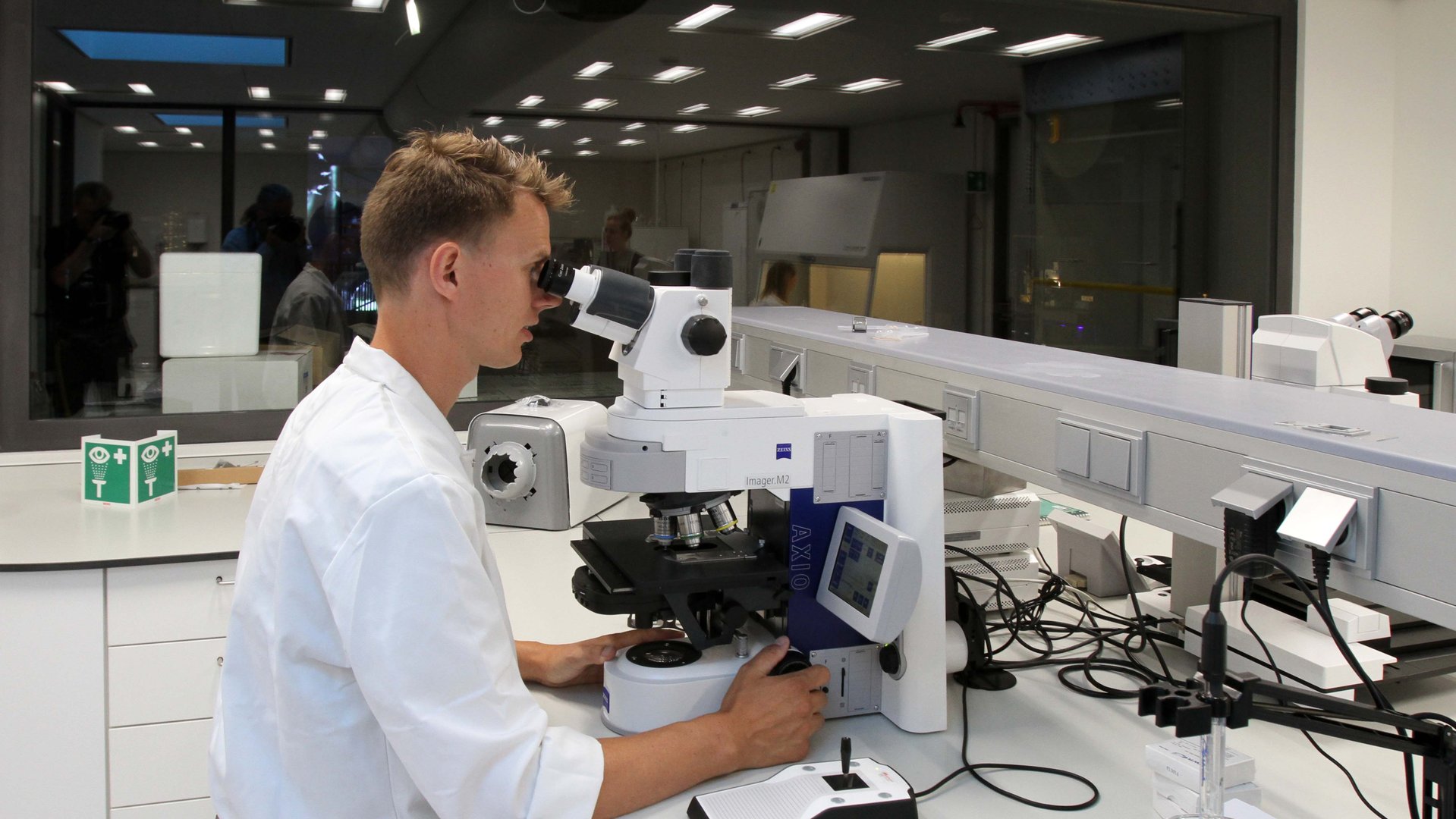A microscope allows you to see what is invisible to the naked eye. Some microscopes magnify objects to 50 million times their actual size. They can even allow you to see molecules.
A microscope allows you to see what is invisible to the naked eye. Some microscopes magnify objects to 50 million times their actual size. They can even allow you to see molecules.
The invisible made visible
A microscope is an instrument which allows us to see objects measuring just a few micrometres (µm - a thousandth of a millimetre) or even a number of nano metres (nm – a millionth of a millimetre). They are used in scientific research, for the most part to study micro-organisms.
Old Dutch pride
Dutchman Antoni van Leeuwenhoek, a cloth trader from Delft, was the first person to discover micro-organisms. He did this using his own home-made microscopes. He placed his specimens on a pin under the microscope lens. He constructed a new microscope for each new specimen. He made around 500 microscopes but, unfortunately, only a few of them have survived.
Sight through light
Microscopes can generally be divided into two types, light and electron microscopes. The light microscope uses various kinds of light to allow the object to be seen. It uses lenses to enlarge the image of the specimen. The stronger the lens, the more the microscope can enlarge the image. Modern light microscopes can magnify objects by a factor of 2,000.
Bundles of electrons
An electron microscope is needed to be able to see viruses. These microscopes use bundles of electrons rather than light to make objects visible. Modern electron microscopes can magnify objects by a factor of 50 million, making it possible to see molecules.

